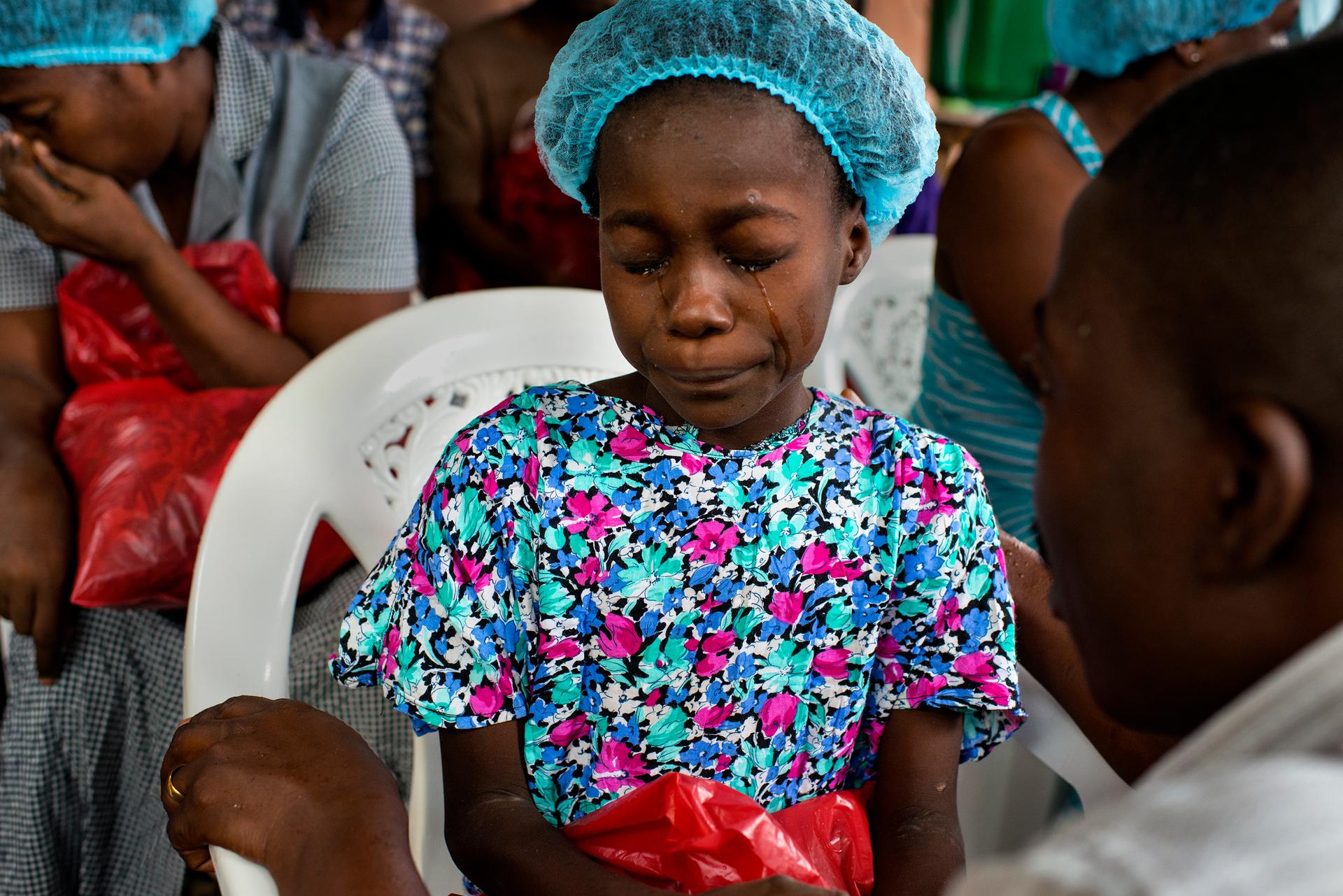Michel du Cille's haunting photographs from the Ebola front included this one of Esther Tokpah, 11, orphaned in Monrovia, Liberia. She had lost both parents to Ebola.
Sometimes artists create works that linger long after they're gone.
That's now true for a three-time Pulitzer Prize winning photojournalist Michel du Cille, who died of a heart attack this week in Liberia while on assignment for the Washington Post.
He was 58. Post Editor Marty Baron called du Cille "one of the world's most accomplished photographers."
Just days ago du Cille shared his reflections covering Ebola in Liberia with his Washington Post colleagues. He said, "Many people ask me why I want to do this story so bad, why I volunteered. I think it’s a just a fantastic journalistic experience. This story on Ebola is a very emotional, challenging. The idea of trying to tell the story of people dying from this terrible virus is a challenge. It's hard to do. It's emotional for me sometimes. I've had my moments when I had to check my emotions but I use those emotions to make sure I'm telling the story in the right way, to make sure that I'm using my sense of respect, my sense of dignity, to show images to the world, and to do the right thing by the subjects. It is not an easy thing to do to see people lying on the ground dead or dying, or to watch someone where they are helplessly trying to get treatment, it is not easy but I feel we have a responsibility to tell the story, and we have a responsibility to tell the story in a poignant and respectful and dignified way."
Du Cille was "fiercely committed to this story of Ebola and honestly portraying the experiences of the people in a region of the world where poverty and conflict had relegated them to unknowns,'' said Kenny Irby, who directs community relations and diversity prographs at the Poynter Institute. "He was really committed to telling the story even at the risk of his own life."
Irby also calls du Cille the "one of the most principled photojournalists that I've ever met," and that he really felt "this great need for showing the compassion and preserving the dignity" of the people he photographed. Irby says du Cille achieved that using skillful camera angles, lighting and proximity. "He was willing to get close when he was able, and then back away when necessary, and he actually donned the protective gear so he could get as close as possible along with the medical workers."
Irby says it's impossible to single out one photo that defines du Cille as a photographer. Instead he says there are "many photo galleries of his work in my mental album and it would be unfair to identify a single frame out of individual whose life has been committed to documenting the experiences, both the horrific and the harmonious experiences, it's really interesting, he was able to show hope and hard times in dark places as well as the tragedy."
Michel du Cille photographed earthquake survivors in Haiti, crack addicts, Hurricane Rita survivors in Louisiana and wounded returning Army vets at the Walter Reed Army Medical Center in Washington. You can see a collection of Michel du Cille's photographs posted by the Washington Post.
